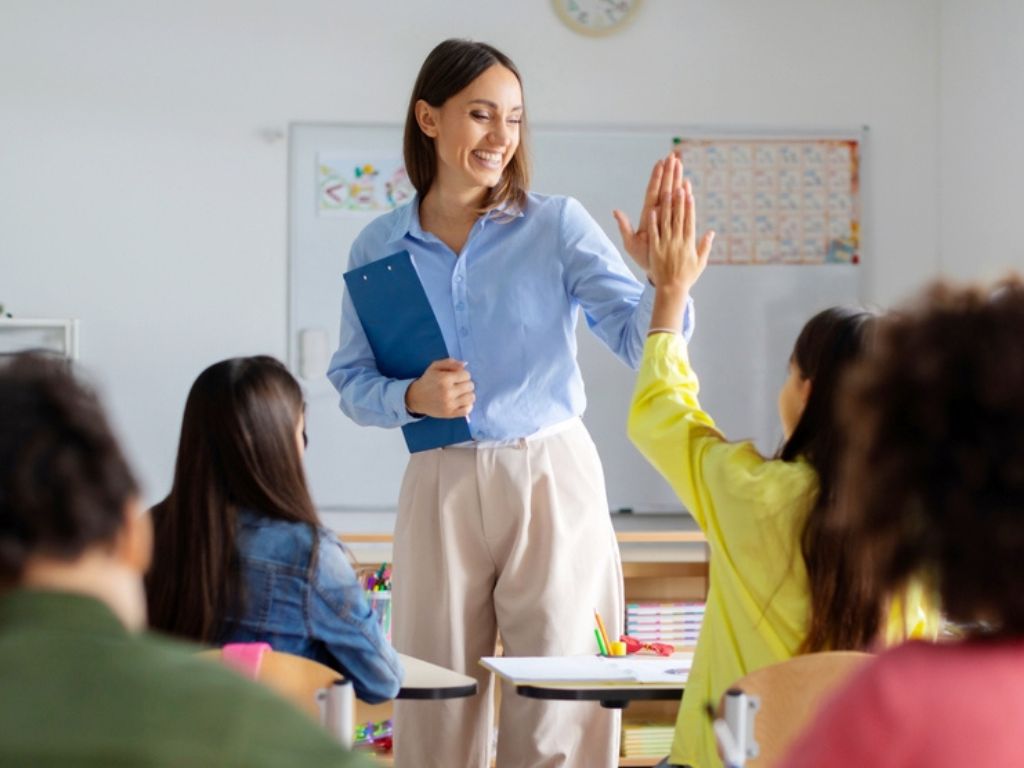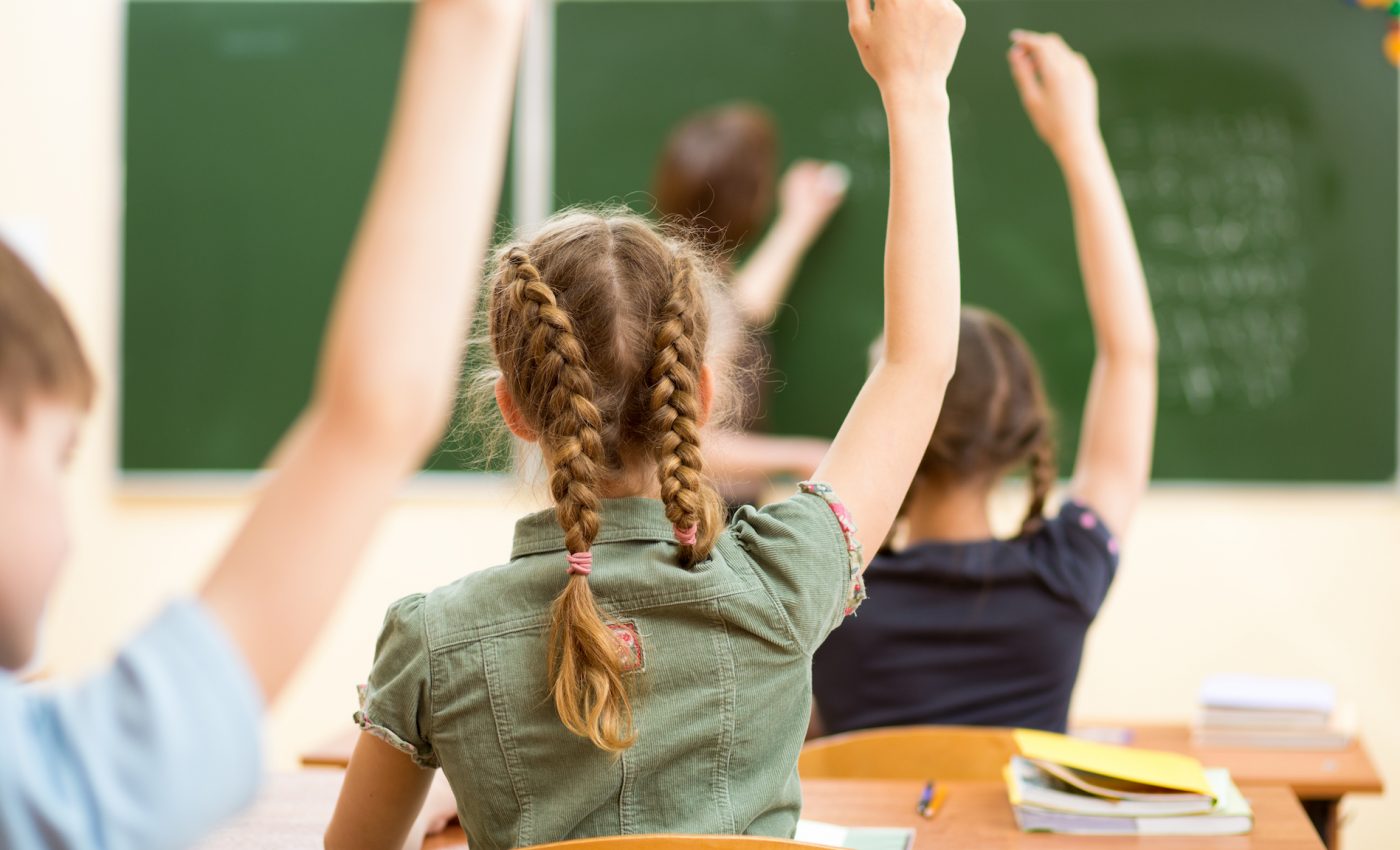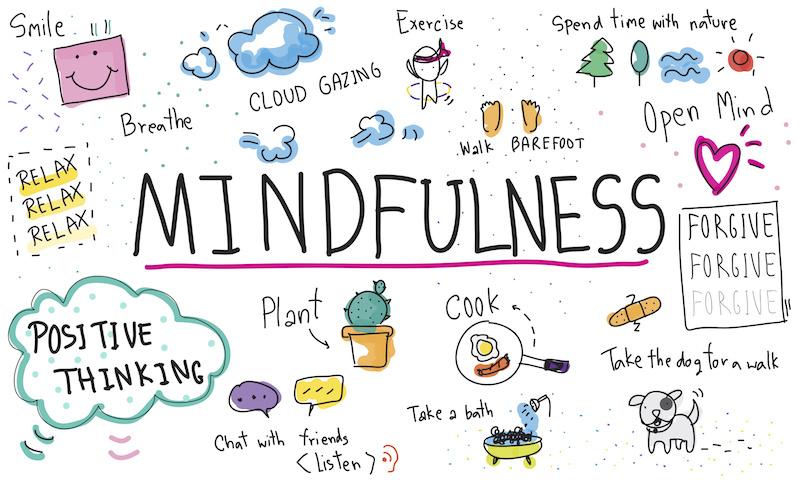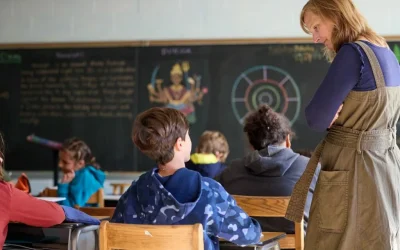A Teachers Best Friend
Life Coaching for Teachers!
Empowering Educators to Thrive, Not Just Survive
Maybe you want to apply for a promotion, a new position, or an award, but you just need some support and help to do it. Let’s talk! Schedule a 15-minute chat with me to discuss how I can support you in your journey!
Our Services at a Glance

Workshops & Group Coaching

Consulting for Schools

One-on-One Coaching

E-Courses

Teacher Circles

For Teacher Leaders
From Survive to Thrive Teacher Program
The From Survive to Thrive Teacher Program is an opportunity for you to be part of a collaborative, positive, empowering group of like-minded teachers facilitated by a professional life coach (that’s me!). So think of it as the cathartic power of relating to a colleague after a long tough day combined with the encouraging accountability of a coach that keeps you looking forward instead of stagnated in negativity!
Here are the details:
- A small group setting (4-6 teachers max)
- Meeting virtually (via phone) from anywhere across the country
- Once a week for one hour (we want to keep momentum driving but not take too much of your busy teacher time!)
Latest Updates From Our Blog
The Ripple Effect: How Teacher Growth Impacts Student Success
When teachers grow professionally students achieve success through an ongoing cycle that improves both groups simultaneously. Educational growth among teachers creates positive classroom effects which lead to better student results. This paper investigates how educator development leads to better student results while showing their essential connection within educational systems.
Teacher Growth: The Foundation of Student Success
The continuous development of professional skill sets by educators constitutes teacher growth which leads to improved instructional techniques and broader educational competencies and increased teaching expertise. The educational expansion extends beyond new technique or technological acquisition because it establishes a perpetual learning and enhancement mindset among educators.
Teachers who participate in purposeful professional development programs learn to create stimulating instructional materials and develop heightened classroom command as well as adapt to different student requirements. Tactical enhancements allow teachers to establish classrooms that welcome all learners and boost their academic motivation and self-assurance for achieving success.
The Impact on Classroom Environment
The classroom space serves as the most visible location where teacher development creates its effects. Professional development helps educators develop abilities which enable them to establish learning-friendly educational spaces. These teachers master the art of behavior control and leverage technology to improve teaching quality and construct multi-dimensional instructional methods which accommodate diverse student learning needs.
A teacher with knowledge of differentiated instruction transforms classroom content into personalized lessons which provide the best possible learning conditions for every student. The tailored teaching method increases student interest and drive which results in better academic results.
Enhanced Instructional Practices
Educational progress of teachers results in improved teaching methods which create direct positive impacts on student learning outcomes. The educational proficiency of teachers who do professional development allows them to create lessons which address curriculum requirements while being challenging and relevant.
Teachers who completed project-based learning training are capable of creating lessons which foster critical thinking and collaborative experiences and creativity in their students. The combined effect of such tasks enables students to grasp educational concepts more deeply while teaching them valuable skills needed for real-world difficulties such as problem-solving alongside teamwork.
Building Strong Teacher-Student Relationships
Student achievement relies heavily on favorable interactions between teachers and their students. Educational professionals who continue their professional growth develop superior abilities in building positive relationships with their students. Educators who have Stanley Habus’ reflection experiences develop skills to communicate effectively together with providing beneficial feedback and demonstrating authentic student care.

The relationships cultivate classroom trust and student belonging essential for their personal and intellectual progression. Students who receive support and value from their teachers become more confident to risk-taking and question asking and fully participate in their learning activities. These principles apply to students of all ages and backgrounds ranging from an elementary school student to a young adult attending a vocational trade school.
The Practice of Developing Growth Mindsets within Students
Teachers who possess personal growth mindsets demonstrate better ability to teach students the same mindset. Academic abilities grow because students dedicate themselves wholeheartedly to develop their skills as opposed to accepting their abilities as unchangeable fixed attributes.
Educators who demonstrate and instruct students about growth mindsets enable learners to transform obstacles into developmental possibilities instead of ego-threatening situations. Through this mindset change students become capable of using failures for educational purposes while maintaining persistence and working toward ongoing improvement.
The Role of Feedback in Teacher Growth
Teacher growth depends heavily on feedback because this practice reveals both the skills educators excel at and the aspects they should develop further. Teachers who accept feedback from peers and mentors and students use this information to enhance their teaching methods.
The feedback process enables teachers to develop skills which help them give students high-quality feedback that supports learning development. Teachers provide effective guidance to students through detailed feedback which shows them their improvement needs and how to achieve better results.
Addressing Equity and Inclusion
Education needs teacher growth to effectively handle equity and inclusion matters in the classroom. Educators with expanded knowledge of student diversity requirements develop better abilities to construct learning environments which serve all learners.
Equity-focused professional development enables educators to learn-effective methods for recognizing bias and fighting prejudice as well as implementing diverse instructional perspectives and providing equal educational possibilities to all students. TopTradeSchools, an online resource for aspiring trade and vocational school students highlights institutions that focus on teacher and student diversity.
The Long-Term Impact on Student Outcomes

Teacher development leads to enduring effects on educational achievements because it shapes both academic progression and personal development of their students. Educational success under supportive teaching leads students to develop enduring learning passion after school ends.
The skills obtained by students in these learning spaces create readiness for achievements in higher education along with professional success. Educators develop students into adaptable resilient professionals through their focus on critical thinking alongside creativity along with collaboration which helps students succeed in the dynamic world.
Conclusion
The educational achievements of students experience significant positive impacts when teachers develop their professional capabilities. Educational development of teachers leads to classroom environments which become more exciting and supportive and welcoming to all students. The learning environment becomes stronger when teachers develop professionally thus students experience better academic results and emotional health and develop lasting interest in education.
Educational excellence requires essential teacher growth investments because they provide the foundation for success. Schools should establish initiatives that support teachers since these programs create a direct path to student achievement. A comprehensive educational strategy embracing teacher growth and student achievement will be critical in advancing future education which guarantees complete student potential fulfillment beyond 2025.
From Chaos to Clarity: How Coaching Helps Teachers Regain Control
A teaching career demands both deep subject knowledge along with perfect organizational abilities and emotional intelligence and advanced classroom management skills. Modern educational requirements create excessive workload for teachers who struggle to maintain professional control of their lives. The personalized support method of coaching has proven itself as an effective instrument to restore clarity and confidence in teachers’ professional work. The article demonstrates how coaching practices reshape teaching methods alongside promoting better teacher mental health and achieving superior student achievements.
Understanding Teacher Coaching
Teacher coaching enables trained professionals to collaborate with educators through a process of performance improvement assessment and goal setting and strategy development. The individual requirements of teachers along with their specific challenges form the basis of coaching as a professional development method which differs from traditional approaches. The strategy targets the improvement of teaching methods alongside classroom organization and staff welfare development.
Benefits of Coaching for Teachers
2. Enhanced Classroom Management: Teachers who learn better classroom management methods establish controlled classrooms that promote respect while decreasing stress and boosting productivity.
3. Increased Confidence: Teachers who participate in coaching develop professional autonomy which builds their teaching self-assurance and strengthens their classroom leadership.
4. Better Work-Life Balance: Coaching teaches educators to place their health first which enables them to handle professional stress effectively and establish better work and personal life harmony.
5. Supportive Community: Through coaching teachers gain access to a supportive network which combats their feelings of isolation while building a sense of community among their peers.
How Coaching Works

The coaching process unfolds through multiple sessions between the coach and teacher for the following purposes:
1. Identify Goals: Teachers should establish particular realistic objectives that pertain to their teaching methods classroom organization or individual health improvement.
2. Analyze Challenges: The analysis of teacher challenges leads to developing effective solutions for their resolution.
3. Develop Action Plans:Teachers need to build comprehensive action plans which outline their new strategy deployment steps and performance tracking methods.
4. Reflect and Adjust: Teachers should check their progress while acknowledging their accomplishments through periodic evaluation which leads to strategy adjustments.
Types of Coaching for Teachers

1. Instructional Coaching: Instructional Coaching concentrates on developing teaching methods which lead to better student achievement results.
2. Classroom Management Coaching:The coaching model for classroom management teaches teachers how to establish successful methods for controlling student conduct and building an active learning space.
3. Wellness Coaching: Wellness Coaching centers on teacher well-being by offering support to handle stress and maintain equilibrium between work and personal life.
4. Peer Coaching: The peer coaching model connects teachers with colleagues to receive assistance from those who understand their situation.
Overcoming Resistance to Coaching
Educators sometimes show an initial reluctance toward coaching because they doubt its effectiveness or fear evaluation. The coaching process serves as a non-assessment-based teamwork approach which helps teachers reach their objectives.
1. Understanding the Coaching Process: Educators need to understand coaching methods along with its advantages to reduce their concerns.
2. Building Trust:A coach must build trust with their teacher partner before executing successful coaching practices.
3. Focusing on Growth: Coaches should highlight the growth-focused aspects of coaching to show teachers that professional development opportunities exist instead of receiving criticism.
Implementing Coaching in Schools
Educational institutions should adopt coaching as part of their professional development initiatives to play an active role in its promotion. This can involve:
1. Providing Access to Coaches: Schools should make sure teachers obtain access to trained coaches who deliver individualized support.
2. Encouraging Participation: The school should motivate teachers to join coaching programs through benefit explanations along with performance-based rewards.
3. Supporting a Coaching Culture: The development of a coaching culture requires schools to establish a work environment where coaching serves as an essential method for teacher advancement.
Case Studies of Successful Coaching Programs

Multiple educational institutions have launched coaching initiatives which produced better teacher morale and academic achievements among students. A California school achieved major decreases in teacher departure rates following the implementation of their complete coaching system. The program offered teachers both professional development opportunities to improve their teaching methods and stress management techniques together with work-life balance strategies.
Conclusion
Through coaching teachers gain an effective method to take back professional control and improve their teaching methods which leads to better student achievement results. Through tailored assistance coaches assist instructors in creating practical methods for classroom organization together with better instructional delivery and enhanced teacher self-care. The growing awareness about coaching in schools enables administrators to build spaces where teachers receive support and empowerment for professional success. The educational community benefits from educators who accept coaching as it leads them from disorder to understanding thus transforming their teaching practice. The implementation of this approach brings advantages to teachers while it improves educational quality which results in better learning environments for students. Educational institutions that incorporate coaching will transform both their teachers and the entire learning system by creating environments that promote development and strength while achieving exceptional outcomes.
Creating Boundaries Without Guilt: A Guide for Compassionate Teachers
Teachers typically demonstrate both dedication and compassion toward their students. The selfless behavior of teachers sometimes results in excessive work commitments and disregarding their personal limits. For educators to deliver high-quality support to their students while preserving their well-being they must establish healthy boundaries which support career sustainability. This piece examines the process through which caring educators can establish limits without experiencing self-doubt while improving their personal existence and teaching performance.
Understanding the Importance of Boundaries
Establishing boundaries proves necessary to achieve work-life equilibrium. The establishment of boundaries enables teachers to determine their capabilities and limits so they avoid taking on excessive responsibilities. When educators lack clear boundaries their work-related tasks become overwhelming which leads to burnout and decreased classroom effectiveness.
Recognizing the Signs of Overcommitment

Many teachers encounter difficulty identifying their point of excessive commitment to work responsibilities. Teachers need to watch for three main indicators of overcommitment which include persistent tiredness and emotional fatigue and trouble stepping away from work responsibilities during personal downtime. Educators who notice these signs must establish protective boundaries for their well-being.
Strategies for Setting Boundaries
1. Communicate Clearly: Educators need to establish clear limits which they should express to their peers and both students and their families. Educators need to establish proper expectations regarding both their response speed and their presence in the workplace.
2. Prioritize Tasks: Teaching professionals should direct their efforts toward essential student learning activities while postponing or assigning lower priority responsibilities to others.
3. Use Technology Wisely: Teachers should establish technology limits by avoiding work-related communication after their regular hours.
4. Schedule Personal Time: Personal time needs to be scheduled as a vital appointment which deserves the same respect as other important meetings.
5. Seek Support: Develop relationships with colleagues and advisors who comprehend teaching difficulties so they can help you establish professional boundaries.
Managing Guilt and Self-Doubt
Teachers who demonstrate compassion toward their students might experience feelings of guilt and doubt when they establish personal boundaries. Personal boundaries serve as an essential foundation for teaching sustainability and effectiveness so teachers should understand their value exceeds selfishness.
1. Reframe Boundaries as Self-Care: Establishing boundaries functions as an important self-care method which serves the best interests of teachers and their students.
2. Focus on Quality Over Quantity: It is more beneficial to deliver exceptional support within designated work hours instead of trying to handle too many responsibilities.
3. Practice Mindfulness: The practice of mindfulness will help teachers manage their stress and create inner peace which reduces feelings of guilt.
Creating a Supportive School Culture
The establishment of healthy boundaries by teachers receives essential support from schools through their commitment to educator welfare. Schools which develop a supportive environment for teacher well-being will enable educators to care for their needs without experiencing guilt.
1. Professional Development: Schools should organize educational programs about creating boundaries together with programs for personal care.
2. Administrative Support: Administrators should demonstrate and provide backing for staff boundary maintenance initiatives.
3. Peer Support Groups: Teachers should create mutual support groups to exchange experiences about boundary maintenance methods.
Integrating Boundaries into Teaching Practices

1. Boundary Setting in the Classroom: Students need to understand during their classes precisely what classroom expectations are and how they should reach out to you outside scheduled times.
2. Prioritizing Tasks: Teachers should dedicate their time to activities which directly benefit student learning while giving other responsibilities to colleagues.
3. Technology Use: Educational technology should be used to automate repetitive tasks and create digital communication rules.
Overcoming Common Challenges
1. Finding Time: Every teacher who handles a heavy workload can dedicate short daily periods to establish boundaries. A person can begin by dedicating only a short amount of time for planning which serves as a workable starting point.
2. Skepticism: Some educators show doubt about boundary setting yet implementing these strategies for a brief period will help them observe the positive effects firsthand.
3. Support from Colleagues and Administrators: A school-wide commitment to boundary setting enables educators to receive support which helps them continue their teaching practice.
Conclusion
Establishing professional boundaries stands as an essential requirement for teachers who want to preserve their career health and sustainability. Compassionate teachers who establish proper boundaries alongside clear communication and task prioritization techniques alongside guilt and self-doubt management and school culture development will deliver exceptional student support together with personal well-being protection. The establishment of healthy boundaries by educators leads to their increased effectiveness and resilience and role fulfillment which generates benefits for both teachers and their students. When teachers make boundary setting their self-care practice they can achieve career success while creating positive impacts within the educational community. The approach creates positive impacts on personal well-being and simultaneously creates an environment that promotes teacher and student success.
The Power of Pause: Mindfulness Techniques for Busy Educators
Teachers in educational institutions perform various concurrent duties which include creating lesson plans alongside managing classrooms and offering emotional support to their students. The elevated stress levels create burnout conditions that affect educators’ health and their performance in delivering instructional content. The practice of mindfulness allows teachers who lead busy lives to develop stress management skills along with improved teaching methods.
Understanding Mindfulness
The practice of mindfulness emerged from Eastern traditions and modern people have adapted these techniques for contemporary life. The practice allows individuals to become aware of their mental and physical experiences without adding any assessment or evaluation. People who practice present-focused awareness eliminate future and past-related concerns which creates both mental peace and mental clarity. Teaching professionals find mindfulness particularly helpful for dealing with emotional work challenges while also developing better classroom relationships.
Benefits of Mindfulness for Educators

1. Stress Reduction: Through its teachings mindfulness enables educators to become better at recognizing and controlling their emotions thus reducing their stress levels. The practice of mindfulness on a regular basis reduces anxiety and burnout symptoms which results in better overall health.
2. Improved Focus: The practice of mindfulness improves focus through better attention which leads educators to deliver more effective communication and deliver better teaching during lessons and meetings.
3. Enhanced Emotional Regulation: The practice of mindfulness enables teachers to enhance their emotional control abilities thus creating better classroom environments. Students benefit from emotional regulation since teachers display healthy emotional responses to their students.
4. Better Student Relationships: Educators who practice mindfulness develop stronger relationships with their students because they improve their ability to understand and empathize with others. This empathetic approach fosters stronger teacher-student relationships and a more supportive learning environment.
5. Increased Creativity: Educational practitioners who practice mindfulness techniques can boost their creative abilities to create new approaches for lesson planning and teaching methods which better engage their students.
Mindfulness Techniques for Educators

1. Breathing Exercises: A simple practice of breathing exercises can be performed by educators anytime they have brief moments between their classes. Breathing exercises help educators achieve mental relaxation while decreasing their stress levels.
2. Body Scan Meditation:Through Body Scan Meditation educators learn to lie down or sit comfortably before moving their awareness through each body part while releasing tension during the process. This method functions as an efficient method for relaxation and recovery.
3. Mindful Walking: During a hectic day Mindful Walking offers students a quick break when they walk mindfully while feeling their feet touch the ground one at a time.
4. Loving-Kindness Meditation:Through Loving-Kindness Meditation practitioners learn how to send positive thoughts both to themselves and others which builds compassion between individuals. The practice serves well to handle challenging situations when dealing with students or colleagues.
5. Guided Meditations: The use of guided meditations found both online and in apps provides structured mindfulness practice to assist beginners in meditation.
Integrating Mindfulness into Teaching Practices
1. Mindful Moments in Class: Educational sessions should contain brief mindfulness practices which benefit students by helping them maintain their focus and reach relaxation. The practice requires only one minute of deep breathing combined with a few seconds of body scanning.
2. Mindful Communication:The practice of mindful listening and speaking improves communication between students and colleagues. The practice promotes both attentive listening and considered replies which results in enhanced interactions between people.
3. Creating a Mindful Classroom Environment:A mindful classroom environment emerges when teachers design spaces using calming colors and nature sounds which establish peaceful conditions for learning.
4. Mindfulness-Based Lesson Plans: The development of mindfulness-based lesson plans enables students to build emotional intelligence skills while gaining self-awareness abilities.
Overcoming Challenges to Mindfulness Practice
2. Skepticism:School personnel who doubt mindfulness can overcome their skepticism through brief personal experience of its positive impact.
3. Support from Colleagues and Administrators:A school-wide mindfulness initiative receives backing from both colleagues and administrators which helps educators maintain their mindfulness practice.
Implementing Mindfulness in Schools
Schools serve as key institutions to support mindfulness development among their teaching staff. Schools establish well-being and resilience cultures through their professional development programs which include mindfulness training or by implementing mindfulness workshops. Educational benefits from mindfulness implementation spread to students which creates better learning conditions for both groups.
Conclusion
The practice of mindfulness provides teachers with an effective method to handle their stress and develop better teaching methods that produce enhanced student achievements. Educators who practice mindfulness techniques in their daily lives develop inner clarity and peace which enhances their teaching effectiveness while providing them satisfaction. Mindfulness integration across educational spaces shows promise to revolutionize both educators and educational settings while developing environments based on compassion and creativity alongside resilience. Educators who use pauses to harness their teaching passion will establish a more supportive classroom environment which engages their students better. The implementation of this approach brings advantages to teachers and supports the development of a better educational system which operates more effectively.
How Teachers Can Prevent Burnout and Thrive Again
The education sector faces a widespread teacher burnout problem because teachers experience long-term stress and heavy workloads together with the emotional responsibility of helping students. Through appropriate educational strategies teachers can stop burnout while recovering their teaching enthusiasm. The article provides specific approaches teachers need to maintain their well-being while achieving career success.
Understanding Teacher Burnout
The combination of persistent stress eventually results in complete exhaustion of both body and mind and emotional well-being. The main factors causing teacher burnout include excessive workload, insufficient resources and the psychological burden of caring for students. The symptoms of burnout include constant fatigue together with irritability and decreased teaching performance alongside feelings of detachment. The early detection of these signs remains vital because it enables teachers to prevent burnout from worsening. Teachers who experience burnout start doubting their ability to impact students and develop emotional distance from their pupils while simultaneously losing their work passion.
Prioritizing Self-Care

The prevention of burnout requires attention to personal care. Teachers prioritize their students above all else yet they must maintain their own well-being because it leads to sustained career achievement. The combination of exercise and proper nutrition along with sufficient rest enables teachers to gain increased energy while developing stronger resilience. Practicing meditation together with yoga enables teachers to manage their stress and improve their ability to focus. Teachers who schedule time for hobbies and relaxation activities develop better mental and emotional recharge. Unrelated activities such as reading, painting and playing music offer teachers a much-needed rest while developing their creative potential.
Setting Boundaries
Teachers need to create clear divisions between their employment duties and personal time to prevent work-related exhaustion. Teachers need to avoid both work-related duties and email correspondence at times outside their school hours. A distinct boundary helps teachers maintain their leisure time without experiencing regret from incomplete responsibilities. Educators should explain their personal boundaries to colleagues and administrators to develop mutual understanding about their time for personal activities. The work-life balance improves when teachers set practical expectations regarding their response times to students and parents.
Building Support Networks

Support networks that are strong provide teachers with substantial help in fighting burnout. Teachers need to develop professional connections with colleagues who fully grasp the difficulties of teaching. Teachers who exchange their experiences and solutions develop a united spirit which helps diminish feelings of loneliness. Mentorship programs together with peer support groups serve as supplemental ways for teachers to find guidance and encouragement. The networks offer members emotional backing as well as opportunities to exchange exemplary practices and work together on difficult tasks.
Streamlining Workloads
Workload management enables teachers to stay clear of overwhelming situations. Teachers should allocate their time to activities which directly advance student learning outcomes by decreasing their efforts on less important responsibilities. Teacher workload becomes lighter when they assign tasks to others or work together with their colleagues. The adoption of technology tools in grading tasks alongside lesson planning reduces time requirements and boosts operational effectiveness. The adoption of digital platforms for assignments together with feedback tasks decreases paperwork so teachers gain additional time for teaching and mentoring activities.
Fostering a Positive Classroom Environment
A positive learning environment improves the experiences of teachers and their students at school. The development of mutual respect between educators and students alongside engagement and enthusiasm leads teachers to experience better job satisfaction. Small achievements within the classroom such as student accomplishments and innovative lesson plans help teachers rediscover their love for education. Student involvement with autonomy develops classroom communities based on shared responsibilities.
Seeking Professional Development

Teachers who participate in continuous learning activities maintain their career motivation while staying dedicated to their profession. Professional development programs supply teaching professionals with modern insights and creative teaching methods together with new abilities that boost their educational performance. Educational workshops together with conferences enable teachers to connect with peers who have common educational objectives. Educational events inspire fresh teaching strategies which help teachers gain knowledge about current instructional methods and technological advancements.
Advocating for Systemic Change
Systemic changes need to be implemented to fully solve the problem of teacher burnout despite individual attempts at improvement. Educators who join unions or work alongside administrators can secure better resources and smaller class loading and equitable compensation. The promotion of teacher well-being awareness leads institutions to establish supportive measures. Systemic changes resulting from advocacy work provide benefits to teachers alongside students and educational stakeholders as a whole.
Conclusion
Preventing burnout needs immediate actions which develop physical wellness together with emotional strength and career success. Teachers who implement self-care practices alongside boundary setting and network building and workload optimization and positive environment creation and professional advancement and systemic advocacy will protect their well-being and resume their teaching career with success. Educators can sustain meaningful contributions through implemented strategies that help them manage their life balance. Educational success for teachers leads to student success which creates better learning conditions for all members of the educational community.
Sustainable Teaching: Building a Career You Don’t Need to Recover From
Teaching stands as a career that combines both high rewards with significant challenges. School teachers commit to developing students through personal sacrifice which sometimes harms their personal health. Teaching professionals experience burnout when they do not manage their long hours and emotional demands along with multiple duties effectively. Sustainable teaching provides teachers with a method to establish a rewarding career that keeps them energized and avoids requiring extensive recovery time. Educators who implement strategies that focus on balance together with well-being and efficiency create careers that deliver meaningful results and sustain their professional journey.
Understanding Sustainable Teaching
Teachers who practice sustainable teaching establish procedures which let them succeed in their work without affecting their private time. This approach emphasizes sustaining energy levels and maintaining enthusiasm together with health throughout an extended period. The teaching career spans like a marathon rather than a sprint thus demanding approaches that promote professional longevity.
Prioritizing Self-Care

Sustainable teaching depends on teachers practicing self-care as its fundamental principle. When teachers focus on their students’ requirements over their own they risk burning out and losing their classroom teaching effectiveness. The three pillars of physical and mental health maintenance consist of exercise practice and healthy eating habits and sufficient rest. Teaching professionals should pursue activities beyond their work responsibilities to obtain necessary relief from their occupational requirements.
Teachers who practice mindfulness techniques including meditation or yoga develop better stress management skills which helps them maintain presence in their daily activities. When teachers dedicate time to self-care activities they gain the ability to start their work with increased energy levels.
Setting Boundaries
Sustainable teaching requires teachers to create distinct limits that separate their work duties from their personal life. Teaching professionals face continuous pressure to stay accessible at any time since they must answer emails throughout the night and complete work during their personal days. The ability to always be reachable results in professional exhaustion.
Teachers should establish particular work hours that they follow to establish a clear division between their professional duties and their private life. Teachers must establish clear work boundaries which they need to communicate to their colleagues alongside students and their parents to create mutual understanding and respect. Teachers who protect their personal time achieve a better work-life balance which prevents them from becoming overwhelmed.
Streamlining Workloads

Teaching sustainability requires efficient work methods. Teachers should focus their time and energy on essential student learning activities which bring maximum results while reducing their work on non-essential tasks. The use of technology tools in grading and lesson planning eliminates both time and effort requirements.
The reduction of workload depends heavily on teachers who collaborate with their colleagues. Teamwork develops through co-planning lessons and resource sharing and delegation of responsibilities which reduces individual workload. Teachers can reach superior educational results through strategic work methods instead of excessive efforts which leads to burnout.
Fostering Positive Relationships
The development of strong connections with students and colleagues and administrators creates an environment of support at work. The development of positive interactions between teachers builds school community and unified purpose which helps teachers handle their teaching challenges. Teachers should celebrate student accomplishments together with team successes because these events increase school morale and enhance the joy of teaching.
Conclusion
Sustainable teaching produces an energizing career experience instead of one that causes exhaustion. Educators who make self-care a priority combined with boundary creation and efficient workload management and relationship building will develop careers that provide satisfaction without recovery needs. Teachers benefit through this approach which leads to improved student learning because educators deliver their best performance every day at school.
How to Recover from Teacher Burnout
It’s been a really stressful school year, and a record number of teachers are reporting feeling the effects of teacher burnout. As you finish up the school year and begin your summer break, I have some tips for you on how to recover from teacher burnout.
Ah summer. It’s a glorious and much-anticipated time for any teacher in any year. But no summer is more welcome than this summer – the summer of 2021. After coping with the increased demands that the COVID-19 pandemic brought, teachers are breathing a collective sigh of relief and thinking “how in the world am I going to recover from this year so that I can eventually comprehend the idea of going back for another year?!” How will you recover from your teacher burnout?
You aren’t alone – Teacher Burnout is a second pandemic
I actually had a new client ask me last week, “Is it just me? Or are others out there feeling this way?” Let me reassure you… you are not alone. A review of education research shows that teacher burnout is a worldwide pandemic and has been for some time! Stress is the most common reason that teachers leave the profession, and this year, over 50% of the teachers that left teaching named their concerns about how the COVID-19 pandemic was being handled and going back to in-person learning as the main reason for their leaving. Double-whammy! This has prompted some to wisely encourage education and community leaders to worry about teacher loss as much (if not more) than learning loss from the pandemic.
So – NO – you are NOT alone. If you are feeling like you have just clung for dear life to the very thread-bare ends of your rope, you are actually in good company.
Signs of burnout
Let’s first define burnout: Burnout is a state of chronic stress that will eventually lead to physical and emotional exhaustion, cynicism and detachment, feelings of ineffectiveness and lack of accomplishment. While the symptoms listed below is not a complete list of symptoms of burnout, here are the things I see the most from my teacher clients:
A short fuse: Are strong emotions floating just below the surface? Or are you easily “triggered” or “set off”? Are you more irritable with colleagues and/or students?
Trouble sleeping even when exhausted: You may find yourself falling asleep quickly, but not able to sleep through the night. Once you are up, your mind is racing about all there is to do. Any unusual sleep patterns could be signs of stress and burnout.
No motivation: The stress is keeping you going, but you have no real motivation to keep moving at all. You just want to stop.
Physical symptoms: Sick more often, sick longer, headaches, changes in appetite, hair loss, stomach or bowel problems etc. Any unusual physical symptoms may be worth a double look for whether they might be caused by the stress you are experiencing.
Increased anxiety or rumination: Can’t let things go as quickly, worrying about things that normally wouldn’t bother you, etc.
Resentment and anger: Cynicism and resentment over the demands of your job, how you are treated, other people’s behaviors and choices etc.
Brain fog: Lack of focus or clear thoughts
These are some common symptoms but are by no means an exhaustive list. Your symptoms may be a little different, but you know it when you see/feel it.
How to recover from teacher burnout
Thankfully, as teachers, we do get some cyclical relief from many of the stressors that ail us – SUMMER BREAK! However, summer break is not always a “break” for many of us who may take on summer school, childcare duties, extra jobs, catching up on life etc. I know that there may be different stressors that enter the picture (more on that later in this post), but there is an end to this school year, and thus an opportunity to hit the reset button.
So – now that the light of summer is at the end of this tunnel of a school year, you may be starting to feel some relief and hope that your recovery from burnout is ahead! Here are some ways to recover from teacher burnout:
Physical Recovery
Remember that burnout is chronic stress. Which means, even after the stressors/root causes are eliminated (either because of summer break or with a targeted plan to address them), you’ll still need to physically recover from burnout. Physical recovery can include:
Sleep! – Intentional bed times, wake times and naps!
Exercise – Research correlates a good, heart-pumping, challenging sweat with completing the stress “cycle” in our bodies. It doesn’t have to be a ‘workout’ though, it can be a tough hike or a dance party!!
Restore – Gentle walking, yoga, stretching, gentle swimming/floating, sitting, laying down, and light massage are all excellent ways to restore your physical body.
Fuel – Take time to prepare delicious, comforting, and nutritious meals for yourself (whole foods are best for your body’s recovery).
Hydrate – Water is amazing and it does amazing things for your body!! As teachers, we are often dehydrated which leads to bodily stress, fatigue, and brain fog among other unsavory effects.
Emotional Recovery
Emotional recovery is about taking care of your heart, healing from the trauma and toxic positivity of this year and what you experienced, processing your emotions, and letting them work through you. As teachers, we are often so busy that we don’t have adequate processing time. Promising research supports that talking regularly about the emotions you experience daily as a teacher is some of the most powerful resilience-building you can do. Thus, using some time over the summer break to process and heal emotionally, can be extraordinarily powerful in recovering from burnout.
Here are some ways to recover emotionally from burnout:
Talk about it – Express yourself to a support person – a friend, family-member, coach, or therapist work great. Ask them to simply listen, witness, validate, and let you process it all aloud.
Journal – Everything you would say to another person (above), you can also write down. Write about what you are experiencing. What is the burnout like for you? How will you recover? Which things are you taking from this experience that will serve you in the future and in your life overall? What do you need to leave behind about this past year?
Be quiet – Sometimes we just need the silence to do the emotional recovery for us. When you’ve processed what you need to process, let your mind and heart experience quiet.
Encourage yourself – Take some time to reflect on what you learned about yourself this year. What superpowers did you access this year that you didn’t know were in you? What skills did you gain?
Consider your emotional “diet” – What does your mind/heart need to consume in order to recover emotionally? Maybe you need to laugh at some funny #teacherlife or #distancelearning memes. Maybe you need some good, soul-encouraging TV shows. There may be other things that you need to cut out (like social media for a little while, or stress-inducing TV).
Cognitive Recovery
Our mental energy can become depleted on the cognitive level making it difficult to make decisions, or desire to grow and change. It becomes hard to be in the present moment, and we spend more and more time in either the past (dwelling and ruminating) or the future (what’s coming). Summer gives you the ultimate cognitive energy recovery because it gives you a BREAK. Here are some ways to recover from cognitive burnout:
Download – If things keep popping into your mind without your permission (ruminating about the past or worrying about the future especially), it may be helpful to do a mental download or “brain dump”. Write it all out, then close your journal and “put it away” until it needs to be considered again.
Just be – Take breaks where you don’t do anything – just be. Give yourself as much time in between activities as possible. Give yourself margin to just BE.
Spiritual Recovery
Spiritual recovery is all about reigniting the drive and motivation needed to engage in your life in a meaningful and purposeful way. When you are burned out, you lose touch with your purpose and meaning and you can’t find the will to do anything that feels like a demand. Your spirit – your drive – is what makes even busy days feel fulfilling and meaningful. This is the difference between a “good tired” from working hard at something you love and “burnout tired” which is when the joy and excitement about life is gone.
To recovery your spiritual energy, consider these tips:
Get into nature – Go for a hike. Put your toes in the ocean. Get into nature however you most like to experience it. This helps ground us and reminds us of our connection to Life itself. We remember how small we are in the BIG picture of life. And that makes our problems feel smaller. Being in nature has been shown to have all sorts of positive mental health benefits.
Connect to your being – Spiritual energy doesn’t have to do with religion – but it does have to do with what you believe about life, about your worthiness, and about your place in the world. Meditation, prayer, spiritual reading, poetry, are all things that can help you connect to your broader purpose and meaning in life.
Connect back to your “why” – Many of the reasons that we all got into teaching were not possible this year (at least to their normal extent). So we are feeling dull and empty. Go back through your memory to find moments that inspire, encourage, and motivate you. Write them down. Journal about why you do what you do and why you think your job is important.
Meet with a coach or therapist – Sometimes we are so far “gone” that we need some external support to reignite this side of ourselves. It’s a sign of strength to ask for help when you need it. And nothing could be more important that reigniting your drive for life!
Relational Recovery
Relational recovery is all about connecting back to your community – your loved ones and friends. Teacher burnout can leave us lonely and isolated, so it’s important to reignite the sense of belonging that we all crave. At first, you may need to be cared for, but when you recover more, you’ll find it fulfilling to care for others too. So here are some ideas for relational recovery this summer:
Go to coffee/lunch with a friend – Catch up. Get support. Laugh. Give support.
Engage in meaningful conversation – Meaningful conversations that help you feel connected on a deep level with someone can be truly transformative when recovering from burnout. Share. Be vulnerable. Open up about your burnout or about your thoughts on something important. This accesses and builds your relational energy.
Allow someone to do something nice for you – Sometimes this can be harder to do than you’d expect, but allowing someone to care for you – in big or small ways – is an important step in recovering your relational energy. Remember that you are loved, you have a support system, and you are not alone.
Do something nice for someone else – If you are really burned out, you may not be able to do this one right away, but when you feel ready, doing an act of kindness or service for another person can remind you that you are part of a community. Volunteer somewhere with those less fortunate than yourself at this time. Studies show that volunteering improves overall mental health and happiness.
You can do this
As you can see, there are many ways for how to recover from teacher burnout. But recovering from burnout takes time, intention, and a choice. You are in charge of your life. And if you have different demands on your time this summer – as a caregiver, a summer school teacher, a worker in a second job etc. – it may be important for you to look very intentionally at how you plan to incorporate some of these suggestions so that you actually get the recovery you need.
This isn’t about just getting ready for next school year. This is about you. This is about the quality of life you, as a living, breathing human being, deserve. You are not an inexhaustible resource. You have limits. And this year you found those limits, and then went beyond them. So this summer is for you. It’s your time. Do what you need – for yourself.
7 Tips for Getting More Sleep as a Teacher
Teaching is an extremely draining activity – both physically and mentally. Standing all day, strutting our fast-paced “Teacher Walk”, and at least 500 squats to desks. Plus add in emotional fatigue, and it’s no wonder we’re exhausted!
Sleep is our body’s natural way of nourishing and replenishing our resources. But most of us teachers are completely sleep deprived. How can we get more sleep as teachers?
Most of us suck at this.
A client of mine described it as this –
Her: “I stay up late because I don’t want the evening to end.”
Me: “What is underneath that?”
Her: “Well, I guess at some level, I know tomorrow morning will be ‘back to the grindstone’, so I want to keep resting [by hanging out with my boyfriend on the couch]”
I could totally relate. Can you?
Why is Sleep Good for Us?
Sleep is actually WAY more important than you might think. Dr. Michael Roizen, chief wellness officer of the Cleveland Clinic, put it, “Sleep is the most underrated health habit.”
In fact, here is what Arianna Huffington (self-proclaimed sleep evangelist after she had an almost-fatal fainting spell diagnosed as “exhaustion”) had to say about sleep in her book, Thrive:
There’s practically no element of our lives that’s not improved by getting adequate sleep. And there is no element of life that’s not diminished by a lack of sleep…Our creativity, ingenuity, confidence, leadership, and decision making can all be enhanced simply by getting enough sleep.
Here are some of the statistics and studies about the importance of sleep:
Sleep deprivation negatively impacts our mood, our ability to focus, and our ability to access higher-level cognitive functions: the combination of these factors is what we generally refer to as mental performance (Drs. Stuart Quan and Russell Sanna, Harvard Medical School’s Division of Sleep Medicine)
Poor sleep is associated with higher stress levels and a greater risk of heart disease and diabetes (Duke University)
For the sleep deprived, an extra hour of sleep can do more for their daily happiness than a $60,000 raise (Science)
People make bad judgement calls when sleep deprived, and REALLY bad things in history have been caused by sleep deprivation (like the Exxon Valdez Oil Spill)
Sleep deprivation is actually a known torture technique (ouch!)
There is so much more I can’t even go into! But here are some resources if you want more facts:
Arianna Huffington’s TED talk on Sleep
Article: How Sleep Deprivation Decays the Body and Mind
Okay – you get it…so now how do we fix it?
7 Tips for Getting More Sleep As a Teacher
1. Get Real About How Much Sleep You Really Need
Most of us don’t know how much sleep we need because we rarely get that amount. That’s okay. Just start tweaking with the amount of sleep you get each night and then check in with yourself throughout the day to see how you feel. Once you’ve settled on the amount that is best for you – protect it with all your might! For now, start by increasing the amount you sleep by 15 or 30 minutes. Incremental change is still change!!
2. Set a Bedtime Alarm
It’s so easy to create alarms on our phones – so set an alarm for 30-minutes prior to what you want as your bedtime. When you hear the alarm, shut down devices, screens, chores, tasks, etc. and begin your nighttime routine.
3. Plan Your Evening Backward
Plan your evening backward from bedtime. So for example if your bedtime is 10pm, you’ll need to begin winding down (TV off, doing your nighttime routine) at 9:30pm, so whatever you need to do, shows you want to watch, or papers you want to grade, get it done before 9:30pm so you can make sure you are in bed on time. If you prioritize your bedtime like you do your wake time, you’ll be much more likely to actually get more sleep!
4. Cut Out the Caffeine after 2pm
I have never thought I was affected by caffeine so I would drink coffee even after dinner some nights. But then I started getting more sleep and realized caffeine does affect me – I was always just too sleep deprived to notice!! The general recommendation from sleep professionals is to cut out the caffeine after 2pm.
5. Have a Nighttime Routine
Create a set of rituals that you do before bed like a warm bath, drinking decaffeinated bedtime tea, reading, writing in your gratitude journal, meditating/praying, etc. This will cue your body that it’s time to sleep and you will have an easier time falling asleep.
6. Give Your Device a Curfew
There are very clear studies about the effect of “blue light” which is what our electronics give off on our brain’s ability to calm down. Give your device a curfew of at least 30 minutes prior to bedtime so your brain and body can begin to get cued that it’s time for bed.
7. Practice Deep Breathing
A few deep breaths before you go to bed will help you relax and will begin the body’s repair process.
Coaching Questions:
Which of these tips resonated for you? How so?
How do you want to integrate the tips listed here that could support you in getting more sleep?
Happy sleeping wonderful teachers!!
Setting Goals for Going Back to School
It’s that time of year – or will be soon – for newly purchased notebooks, sharpened pencils all accounted for, the thin lines of new whiteboard markers, washed desks awaiting handprints and chairs awaiting new friends. The time of year that is crisp with newness. The time of year that is so promising and idealic. The time of year when students return to your classroom – bright-eyed and bushy-tailed with chlorine and sun streaked through their hair, and smiles on their faces as they see their friends and teachers again.
Teachers all over the country are beginning to think about going back to school. And even if you aren’t going back for a while, the summer unwind has taken place, you are recharged, and you are now able to start thinking about what you want to do differently next school year.
You may have gone to a fantastic professional development session this summer, participated in some amazing twitter chats from your professional learning network, gone to a conference, or visited a teacher friend from across the country. All giving you new ideas and things to try for next year.
How do you sort through all you want to do this year? How do you set, maintain, and sustain your goals for going back to school?
This is the best time to
- revisit your vision for becoming a teacher,
- align your yearly goals to that vision,
- and create a plan for how to get there.
Visioning
It’s important to take very high-level 10,000 foot view look down at your life and career to begin the process for creating goals for going back to school. So to begin, I suggest you do some work on your personal vision statement. If you’ve never formally written a personal vision statement, I highly encourage you to slow down on this step and really think this one through.
Visioning helps you to create a personal vision, which articulates the desired outcome for your life. You are the author – no one else. Your personal vision will help you to keep “the big picture” in mind when day-to-day stresses of the teaching profession arise.
During visioning, ask yourself these questions (I would recommend journaling the answers):
- What am I most passionate about?
- What do I enjoy most about my life (both in and out of school)?
- Why did I become a teacher?
- What is my purpose in life?
- How does my role as teacher contribute to my life-purpose?
- How do my day-to-day decisions in and out of the classroom help me achieve my greater purpose?
- What do I need to accomplish in my career to feel that I’ve used my role/job/position positively and effectively toward my greater purpose?
When you look at your answers to the above questions, you may see patterns or words and phrases that will help you to create one succinct and condensed personal vision statement. A personal vision statement can be a powerful device to remind you of your vision for your life’s purpose. It can become a mantra for you and can help you in making decisions about the ways you spend your time and energy (in and out of school).
“A personal mission statement is a powerful tool because it provides you with a path for success, and it gives you permission to say no to the things that are distractions,” says Stephanie Vozza of FastCompany.com. In her article about personal vision statements for CEOs found here, Vozza reveals some examples of personal vision statements from some people you may know:
To be a teacher. And to be known for inspiring my students to be more than they thought they could be. ~Oprah Winfrey
To have fun in [my] journey through life and learn from [my] mistakes. ~Sir Richard Branson, Founder of the Virgin Group
To use my gifts of intelligence, charisma, and serial optimism to cultivate the self-worth and net-worth of women around the world. ~Amanda Steinberg, Founder of DailyWorth.com
Setting Goals for the School Year
Brainstorm Your Goals:
With the vision as your guidepost, brainstorm a list of all the things that you want to accomplish this year. Don’t eliminate any at this point. I like using sticky notes for this. I just write each idea on a sticky note and set them all aside for now. Include in your brainstorming all the things you want to keep doing that worked for you last year. Now, in these part of the process, you may want to brainstorm goals in categories:
- goals for each subject you teach
- before school goals
- after school goals
- work/life balance goals
- professional development goals
- extra income goals
- family life goals
- etc.
Organize and Prioritize Your Goals:
Stick your ideas on the whiteboard or on a large flat work surface.
Now begin organizing them. You may start with organizing them into categories (like above or other categories that work for you).
Next, think about each goal in relation to your overall vision. Then organize them this way:
- Put a #1 on goals that are easy to accomplish and are in line with your vision.
- Put a #2 on goals that are hard to accomplish and are in line with your vision.
- Put a #3 on goals that are easy to accomplish but are not in line with your vision (or don’t contribute in a big way to your vision)
- Put a #4 on goals that are hard to accomplish and are also not in line with your vision (or don’t contribute in a big way to your vision)
Here is an example: A teacher in Oregon has a personal vision statement to “use my passion in science and technology to inspire the students in my classes to be life-long learners who seek to know, improve, create, and innovate the world around them.” She completes the goal setting task outlined above and comes across this goal: “To participate in twitter chats twice a week with my PLN (professional learning network).” Depending on the type of twitter chat she engages in, this goal may or may not align and contribute to her overall vision. It’s also difficult for her to do because she has commitments in the evenings when the twitter chats happen. After considering this, she puts it down as in the #2 category. She knows that she can limit this to chats that are in line with her vision, but it would still be a difficult goal to attain. If it’s a worthwhile goal, she will have to determine if she needs to revise the goal to be more attainable.
Here is another example: A teacher from Indiana has a personal vision statement to “lead, encourage, challenge, and inspire both his students and his family in order to seek their fullest potential” and he had a goal brainstormed to take on more committee leadership this year. Upon contemplating this goal, he realizes that increased committee time will mean that he will have less time to lesson plan, and less time with his family. Because both groups (his students and family) are more important to him than the leadership he would cultivate through the committee involvement, he decides to label it a #4.
Now you need to decide which of the goals you’ve brainstormed and categorized you will actually do this year. It’s probably no secret why the goals are categorized into #1, #2, #3, and #4 categories per above.
- #1 are what I like to call the “No brainers” – they are easy to do and align to your vision. Go ahead and add those to the “To Accomplish This Year” pile.
- #2 goals are harder to accomplish, but may be worth it for accomplishing your broader vision. In this case, look at each goal and determine if it is worth it or not. This will require some tough decisions and intentionality. If you decide to keep it and put it in the “To Accomplish This Year” pile, then you need to be willing to commit to the hard work it will take to accomplish it. If you don’t feel inspired to commit, or you know it just isn’t a realistic goal, then consider revising it or setting it aside.
- #3 goals are easy, but aren’t necessarily contributing to your broader mission. Goals in this category may be tempting because they are things you can easily do – but if accomplishing them meant giving up on a #2 goal, would you still do it? If the answer is no, then put it aside. You can keep this as a “Nice to Accomplish but Not a Priority” pile.
- #4 goals are difficult to accomplish or ask you to sacrifice a lot AND they don’t contribute to your mission/vision. These are also “No Brainers” because they should really be taken off your plate altogether. In the case of our Indiana teacher, he may feel disappointed to say “no” when the sign up sheet for committee leadership comes around, but with this level of contemplation, he will feel much more confident in his decision, and will know that by saying “no” to this, he can say “yes” to something that brings him more fulfillment.
Now that you have your goals written out. There may simply be too many to accomplish realistically. Look at those you have left and weed out (or readjust your expectations for) any that you simply realistically will not get to.
Make Your Goals S.M.A.R.T.
For each that remain (hopefully no more than 2-3 in each category), develop them into S.M.A.R.T. goals.
- S = Specific
- M = Measurable
- A = Attainable
- R = Realistic
- T = Time sensitive or time driven (give yourself a time frame).
Here is an example of a SMART goal: I will create more work/life balance for myself this school year by leaving school 45 minutes after school lets out at least 3 days a week.
- This goals is specific – I will leave school 45 minutes after school lets out.
- The goal is measurable – I will know whether or not I made it by setting a timer and making sure I leave before the timer goes off.
- It is attainable – 45 minutes is enough time for me to do the essentials, plus I have 2 days a week where I can stay a little later for committees or planning.
- It is realistic because I know 45 minutes will give me enough time to get the essential things done and will force me to be efficient with my time.
- The goal is time sensitive because it is something I plan to do each week of this school year. Sometimes the T or the time sensitive part of the goal is the deadline for the goal (e.g. lose 10 pounds by March 1st.). So the T for some of your goals may be “by the end of the first semester” or “by the end of the school year” etc.
Make sense?
Now that you have a few SMART goals for the year, you need to create a plan for attaining them.
Creating a Plan
This is the part of the process that is most often overlooked. We set all kinds of goals for ourselves and then don’t set a plan in place for accomplishing them. Then the realities and stresses of the year hit, and we forgo or forget our goals.
So, now you develop your goals into a plan similarly to how you craft a lesson plan. You have your end in mind, now figure out your daily, weekly, monthly, or quarterly goals to get there.
Let’s say your professional development goal is to develop your skills with integrating technology into the classroom. First, figure out what some tasks are to accomplish that goal.
Perhaps the tasks are (1) learn about different modes of technology integration and gather ideas, (2) pick and idea you would like to try and learn more about it if necessary, (3) implement the idea, (4) reflect on your practice to determine if you need to adjust or gather more information, (5) make the adjustment or gather the information, (6) try the technique again, reflect, adjust, and continue monitoring.
Since there are 6 phases to this goal, you may want to split them up over the year. So say by December break, you will have done steps 1-4, then in January through April you can do steps 5 and 6 and make the technique a regular part of your teaching practice.
Note: If you are required to do yearly professional improvement goals for your school or district, this is a perfect opportunity to begin planning these out. Don’t ADD another goal to your plate when goal-setting time comes. Just pick one of these to make part of your official professional improvement plan.
You Did It!
This process may seem like a lot, but trust me – it works! If it seems overwhelming to do it on your own, you may want to consider working through it with a coach. Being intentional with your vision, goals, and plan of action is the first step to being a wholehearted teacher! In fact, there are some other great ways to set yourself on the right path for wholehearted teaching this school year which I’ll go through in my next several blog posts:
- Getting Organized
- Planning Ahead for the Little and Big Things
- Organizing Your Workstation
I can’t wait for to see what’s in store for you this year! With wholehearted teaching as your goal – this school year is sure to be a great one!
Wholeheartedly Yours,
~Alison, A Teacher’s Best Friend









